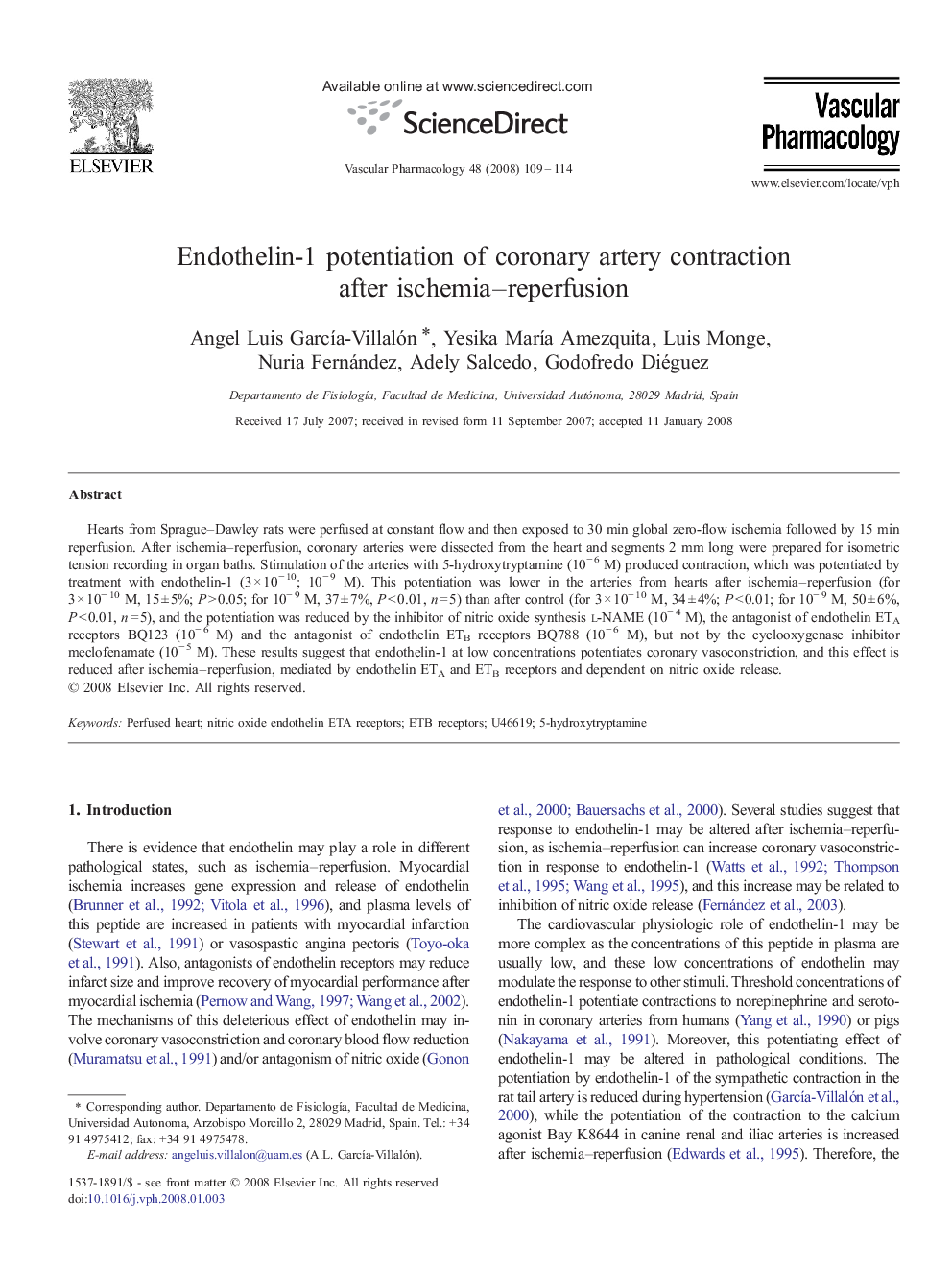| Article ID | Journal | Published Year | Pages | File Type |
|---|---|---|---|---|
| 2574799 | Vascular Pharmacology | 2008 | 6 Pages |
Hearts from Sprague–Dawley rats were perfused at constant flow and then exposed to 30 min global zero-flow ischemia followed by 15 min reperfusion. After ischemia–reperfusion, coronary arteries were dissected from the heart and segments 2 mm long were prepared for isometric tension recording in organ baths. Stimulation of the arteries with 5-hydroxytryptamine (10− 6 M) produced contraction, which was potentiated by treatment with endothelin-1 (3 × 10− 10; 10− 9 M). This potentiation was lower in the arteries from hearts after ischemia–reperfusion (for 3 × 10− 10 M, 15 ± 5%; P > 0.05; for 10− 9 M, 37 ± 7%, P < 0.01, n = 5) than after control (for 3 × 10− 10 M, 34 ± 4%; P < 0.01; for 10− 9 M, 50 ± 6%, P < 0.01, n = 5), and the potentiation was reduced by the inhibitor of nitric oxide synthesis l-NAME (10− 4 M), the antagonist of endothelin ETA receptors BQ123 (10− 6 M) and the antagonist of endothelin ETB receptors BQ788 (10− 6 M), but not by the cyclooxygenase inhibitor meclofenamate (10− 5 M). These results suggest that endothelin-1 at low concentrations potentiates coronary vasoconstriction, and this effect is reduced after ischemia–reperfusion, mediated by endothelin ETA and ETB receptors and dependent on nitric oxide release.
